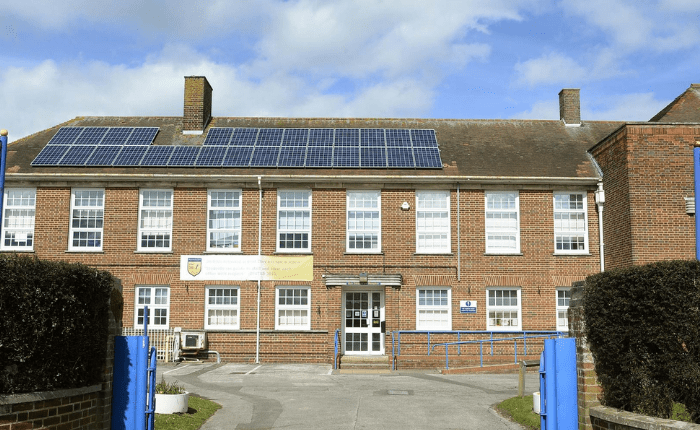Read our editorial from the Education Business magazine, providing business information for education decision-makers.
Now more than ever, schools have a responsibility to demonstrate a proactive approach to reducing energy use and tackling climate change. The publication of the UN IPCC report in August, heralded as “a code red for humanity”, coupled with the landmark COP26 conference in Glasgow, has sharpened the focus on the Net Zero debate. But, armed with a wish list of energy efficiency measures, compounded by budget pressures, where do you start to holistically transform your school buildings to create a space conducive to learning, that limits its environmental impact and meets ambitious energy and carbon saving targets.
For many schools, the legacy of old buildings limits energy efficiency, but there are opportunities that offer a fast return on investment without derailing any future decarbonisation plans.
Lighting
Lighting typically accounts for around half of a school or college’s electricity use, offering a significant opportunity for savings. Upgrading fluorescent lighting to modern LED technology can offer savings of between 40 per cent and 50 per cent, with a typical payback period of eight years. Lighting upgrades can also offer aesthetic improvements, along with reduced maintenance costs since LED lighting is typically rated for 50,000 hours, compared to just 10,000 – 15,000 hours for fluorescent lighting.

Match heating times to building occupancy
A quick win for schools and colleges is to ensure that heating time is aligned to occupation time. Reducing the heating time by even half an hour can have a significant impact on energy consumption and, since the building will retain heat, heating can be switched off before the end of the learning day. However, it is also advisable to turn the heating on before the start of the day too to warm up the fabric of the building, since how warm we feel is down to about one third the air temperature that is around us and about two thirds due to the surrounding surface temperature. Typically, a 1-degree reduction in temperature can achieve an 8 per cent heating saving, so it is important to consider heating requirements in different areas of the building.
BMS optimisation
Building Management Systems (BMS) can help to ensure that heating time matches your building occupancy, as well as offering the opportunity to optimise your hot water and ventilation too. A commonly occurring challenge, particularly where controls are manual, is that schools and colleges will make changes to their settings for summer and half-term holidays but fail to do the same for public holidays, weekends and overnight. A BMS will overcome those issues to deliver immediate savings. Implementing this can reduce gas consumption by as much as 25 per cent through simple control system changes, such as ensuring the plant is not operating when the school is not in use, and that settings match the school’s requirements. The payback period of optimising existing systems can be within a year, and within 10 years when replacing legacy controls with modern technology.
Behavioural change
Energy awareness training to improve staff knowledge of the operation of services can be very beneficial. It is recommended that this takes place annually, as this activity often becomes a short-term focus. Today, IT accounts for a considerable proportion of energy use in schools and colleges, but savings can be made by ensuring that technology is switched off and not left on standby, which can be more easily achieved when using central power adaptors that can shut multiple devices down with one switch. Encouraging staff to close doors and windows and not heating excessively can offer savings of 5-10 per cent.
In summary, we all have a responsibility to act now on reducing energy use to tackle climate change. Energy education will soon be a part of the school curriculum in 2023 when all pupils will be taught about the importance of conserving and protecting our planet; they will want to know what measures their school is taking. Meanwhile, school leaders need to consider the types of technology and infrastructure to invest in to maximise their limited resources while future-proofing their buildings. They will need to select trusted partners that can help them make those decisions and plot their Net Zero roadmap.
Our customer, Manningtree High School, saw immense carbon and cost savings through our work together on decarbonising its school. Read the full case study here
Zenergi is here to help with all the solutions discussed in this article, contact us at bepositive@zenergi.co.uk | 023 8028 6300.
Read the full publication here.









